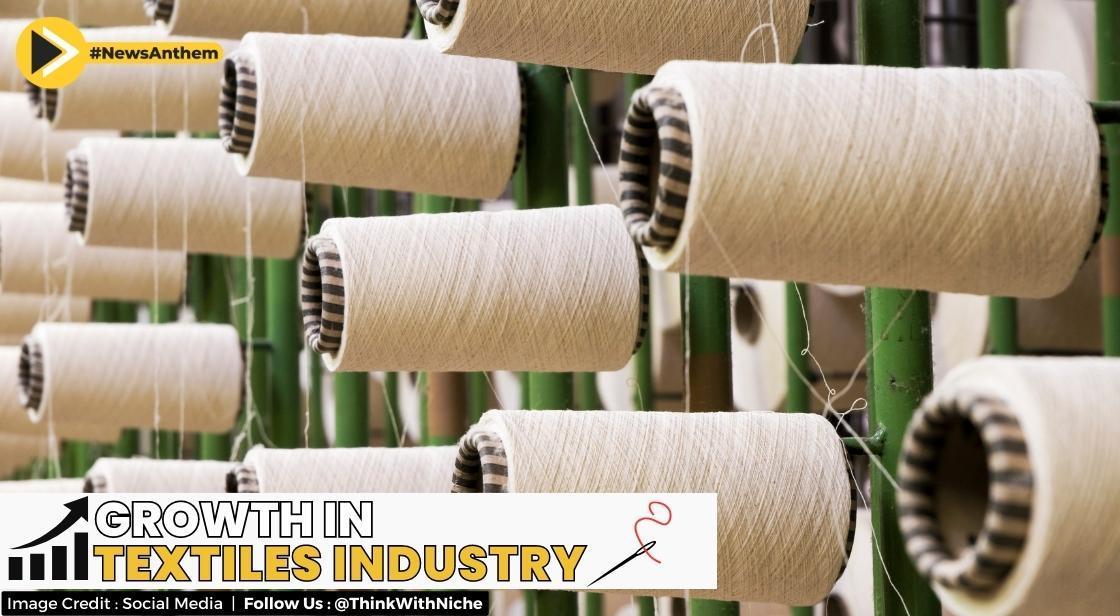India’s Rising Dominance in Technical Textiles: Strategic Policies & Innovations

News Synopsis
India’s textile industry has long been a cornerstone of the nation’s economy, contributing approximately 2% to GDP and holding the position of the sixth-largest textile exporter globally with a 3.9% share in world textile exports.
The industry is poised for tremendous growth, with projections estimating it will reach USD 350 billion by 2030, creating 3.5 crore jobs and solidifying India's role in the global textile market.
While traditional textiles remain a significant component, technical textiles are emerging as a game-changer in the industry. Unlike conventional fabrics that prioritize aesthetics, technical textiles focus on functionality, durability, and safety across multiple sectors such as automotive, healthcare, agriculture, construction, and protective gear.
These textiles, categorized into 12 specialized segments, are revolutionizing industries through their high-performance applications in automobile parts, medical textiles, industrial safety equipment, and infrastructure projects.
To accelerate the expansion of technical textiles, the Government of India launched the National Technical Textiles Mission (NTTM) for 2020-21 to 2025-26, with an allocated budget of ₹1,480 crore.
This initiative is strategically designed to enhance research, promote market expansion, boost exports, and develop skilled professionals, positioning India as a global leader in technical textiles.
Government Initiatives Fueling Technical Textile Growth
National Technical Textiles Mission (NTTM): Key Objectives & Impact
The NTTM is a flagship initiative aimed at making India a dominant player in high-value technical textiles by focusing on:
-
Research & Development: Encouraging the creation of innovative materials and advanced manufacturing techniques.
-
Market Promotion: Expanding domestic and international market opportunities.
-
Export Enhancement: Strengthening India’s global footprint in the technical textile sector.
-
Skill Development: Training professionals to meet industry demands.
Since its inception, the mission has significantly accelerated India’s presence in the technical textile industry:
-
₹517 crore allocated under NTTM
-
₹393.39 crore already utilized for R&D, market expansion, export initiatives, and skill development
-
168 research projects approved, worth ₹509 crore, to drive innovation and manufacturing excellence
Encouraging Innovation & Skill Development
To bridge the gap between academia and industry, NTTM has introduced specialized initiatives:
-
Grant for Internship Support for Technical Textiles (GIST 2.0): Enhances practical learning experiences for students, supporting the ‘Make in India’ initiative.
-
Grant for Research & Entrepreneurship Across Aspiring Innovators in Technical Textiles (GREAT) Scheme: Launched in August 2023, this program funds the commercialization of innovative prototypes.
-
8 startups awarded ₹50 lakh each for advancements in medical, industrial, and protective textiles.
-
₹6.5 crore granted to IIT Indore, NIT Patna, and other institutions to introduce specialized courses in geotextiles, geosynthetics, and sports textiles.
-
Recognizing the need for skilled professionals, NTTM aims to train 50,000 individuals from students to industry professionals through partnerships with organizations like SITRA, NITRA, and SASMIRA.
India’s Growing Export Market in Technical Textiles
Dedicated Export Council for Global Expansion
To strengthen India’s technical textile exports, a dedicated export council has been established. The council focuses on:
-
Identifying global demand trends
-
Facilitating collaborations between Indian manufacturers and international buyers
-
Promoting Indian technical textiles through trade fairs and exhibitions
Technotex 2024: Showcasing India’s Strength in Technical Textiles
India’s progress in technical textiles was highlighted at Technotex 2024, held as part of Bharat Tex 2024. This event provided a global platform for industry leaders, investors, and policymakers to explore India’s technical textile capabilities.
A major attraction was the Innovation Zone, which covered 693 square meters and featured 71 cutting-edge projects, including 48 advanced prototypes and 23 informational exhibits.
Breakthrough Innovations in Technical Textiles
Game-Changing Inventions Driving Market Growth
Indian manufacturers and startups are developing revolutionary technical textile products. One such innovation is:
-
Mahina by Eicher Goodearth: India’s first bonded leak-proof period underwear offering 12-hour leak protection, superior absorbency, and a lifespan of 100 washes. Designed from natural materials, it reduces environmental impact by eliminating the need for disposable sanitary products.
State-Level Initiatives Strengthening India’s Technical Textile Sector
Several Indian states are investing in technical textile manufacturing and infrastructure. Tamil Nadu has taken significant steps, including:
-
PM MITRA Park in Virudhunagar to establish a hub for textile production
-
New textile park in Salem to boost domestic production
-
Capital subsidies increased from 2% to 6% for technical textile investments to encourage modernization and cost reduction
Conclusion
India’s strategic focus on technical textiles is transforming its textile industry, positioning the country as a global leader in this high-potential sector. With the National Technical Textiles Mission (NTTM) driving research, innovation, export promotion, and skill development, India is set to expand its technical textile footprint worldwide.
As the industry moves towards a USD 350 billion target by 2030, government initiatives, state-level investments, and private sector innovation will play a crucial role in shaping the future of India’s technical textile industry. The sector's growth will not only boost exports and employment but also enhance India's self-reliance in high-performance textile solutions.
By staying at the forefront of innovation and global market trends, India is poised to dominate the technical textile landscape in the coming decade.
You May Like









